- Economic worries return
- Bitcoin slid below $30,000
- Oil crept lower
Key Events
Retail sales data from China showed that the economy there was harder hit by recent coronavirus restrictions than expected. The news dented traders’ optimism that had seen markets rebound last week.
The change in sentiment drove futures on the , , , and and European stocks lower.
US Treasury yields recovered from the recent selloff.
Global Financial Affairs
US futures were trading in the red almost at a similar scale to last week’s rebound. NASDAQ 100 futures were the deepest in negative territory after outperforming on Friday.
Similarly, contracts on the Russell 2000 were the second poorest performer, followed by the S&P 500 and the Dow, which outperformed in last week’s final session.
In Europe, the Index opened 0.6% lower, with travel and personal-care-related stocks leading the selloff. Conversely, telecoms outperformed after UK-listed telecoms operator, Vodafone (LON:) surged 3.8% at the open, after Emirates-based telecoms company, e& announced it bought a 9.8% stake in the British mobile phone operator.
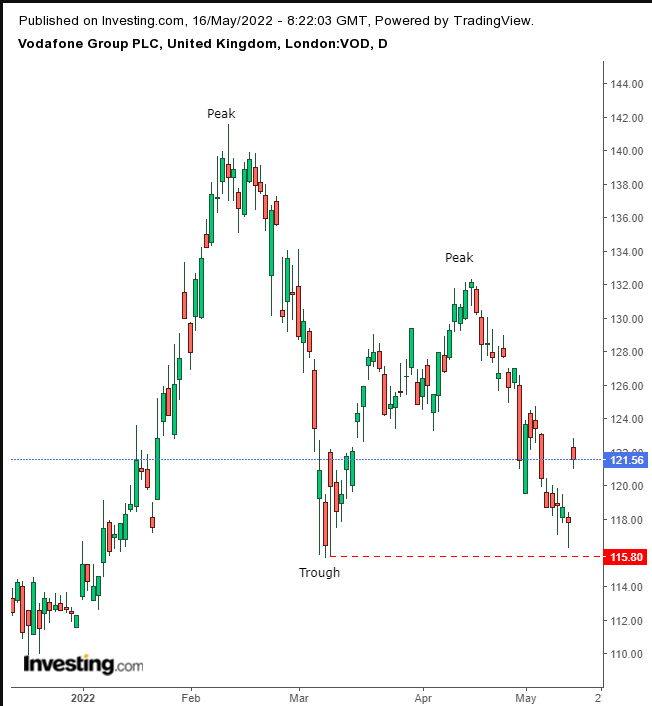
Friday’s bullish hammer may have found independent support at the Mar. 9 lows or developed amid informed money’s demand. The stock avoided registering a lower trough, establishing a downtrend.
Asian markets were mixed, as a 11.1% YoY drop in Chinese data—nearly double estimates—exacerbated the outlook for higher US interest rates.
China’s also declined 2.9% while forecasters were expecting an increase. This data looks especially weak against the backdrop of China’s falling to a four-year low and the PBoC disappointing investors hoping for a rate easing—although regulators did lower mortgage loan interest rates for select home buyers.
China’s underperformed the region, with a 0.34% decline. Japan’s rose 0.45%, outshining regional competitors. Precision Instruments, Chemical, Petroleum & Plastic, and Non-metal Mineral sectors led the gains.
Yields on the note pared losses. This year, treasuries have been leading equity selloffs as investors attempt to gauge the Fed’s often elusive plan for interest rates.
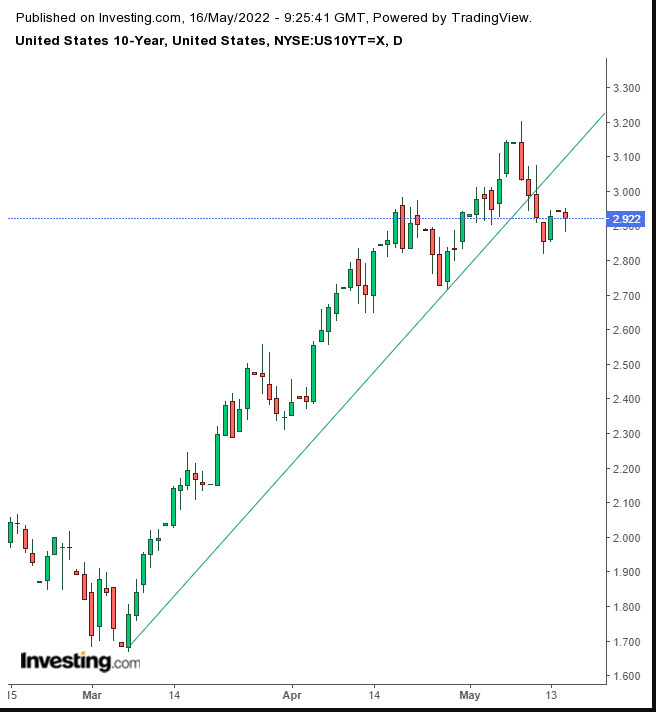
Will the yield be able to climb back above the uptrend line?
Inflation fears have dominated the narrative this year, crushing bond bulls. However, China’s recent weak data is making a good case for concerns on global growth which may encourage investors back into bonds.
If, until now, the outlook for higher rates caused bond selloffs—which pushed yields higher after a 12% loss—debt may pull investors back in as a hedge.
The fell for the second day, giving up an initial rebound. Conversely, the rose for the second day.
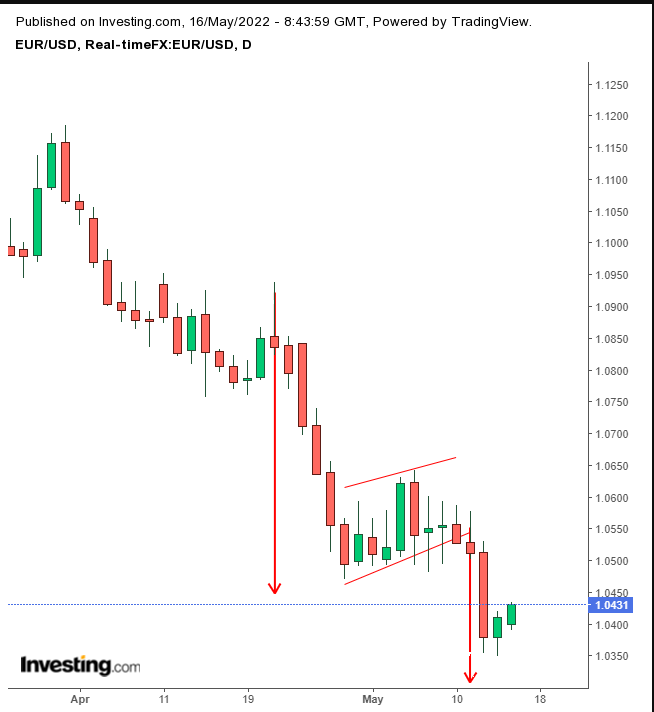
However, the advance is seen within the prism of a return-move to a rising flag—bearish after the initial plunge.
fell for the third straight day toward our .
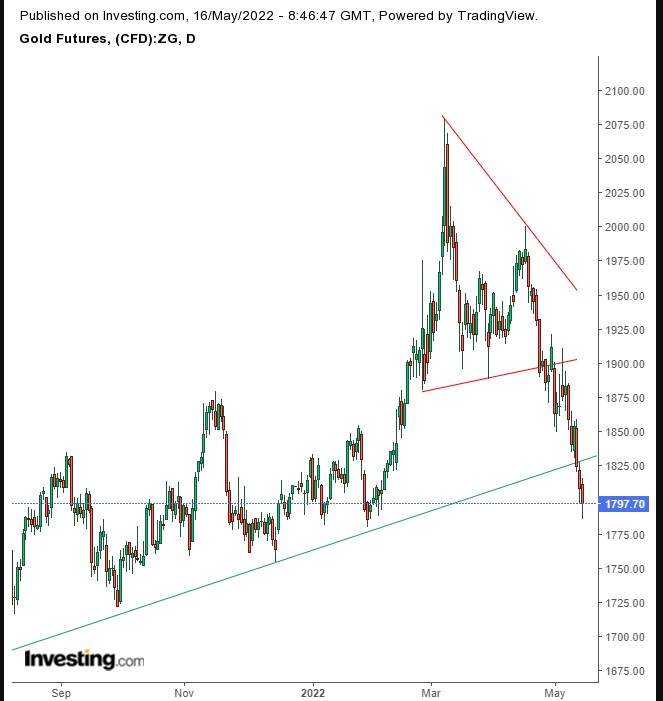
The price deepened its penetration past the rising trend line after completing a bearish triangle.
ended a three-day gain, falling below the critical $30,000 level.

The crypto leader may be forming a Rising Flag, bearish after the initial plunge, even more so, within our broader oft-repeated .
dropped as mounting concerns over China’s economy—the world’s foremost oil importer—increases the likelihood for lower demand.
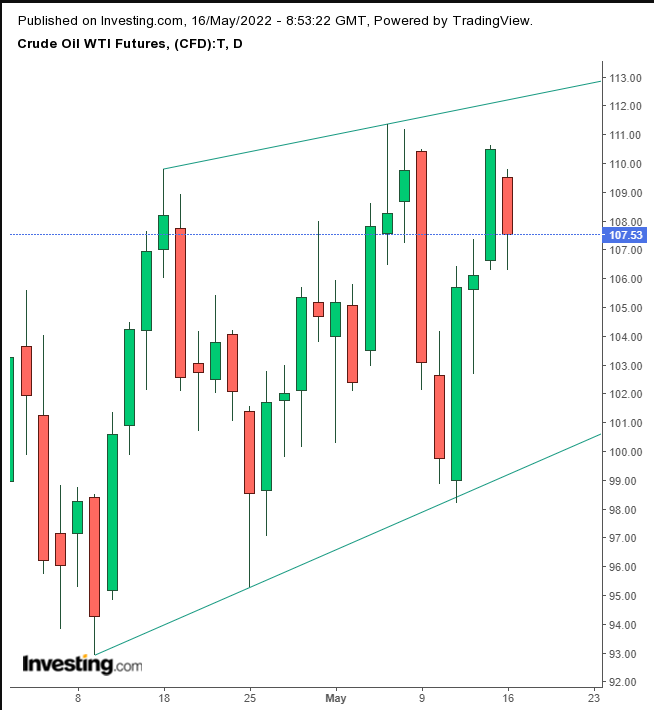
The price is showing signs of falling toward the $100 level, the bottom of a range. However, an upside breakout will likely propel the price toward $125.
Up Ahead
- On Tuesday, the Reserve Bank of Australia releases of its May policy meeting.
- US data is published on Tuesday.
- Chair of the Federal Reserve, is due to speak on Tuesday.
Market Moves
Stocks
- The MSCI Asia Pacific Index rose 0.2%
- The MSCI Emerging Markets Index rose 0.2%
Currencies
Bonds
- Germany’s yield advanced to 0.99%
- Britain’s yield rose to 1.79%
Commodities
- fell 0.65% to $110.85 a barrel
- fell 0.5% to $1,803.79 an ounce


